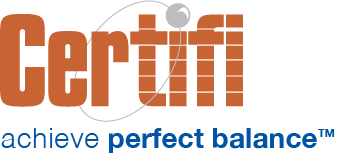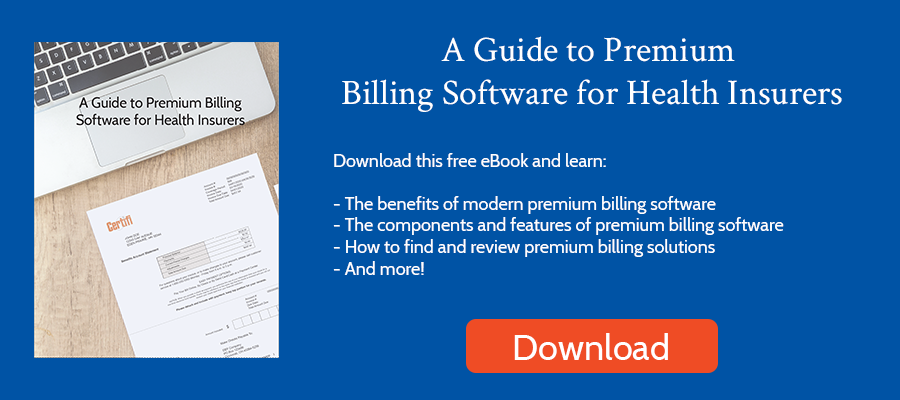In late March, the Centers for Medicare and Medicaid Services (CMS) released the Streamlining the Medicaid, Children’s Health Insurance Program and Basic Health Program Application, Eligibility Determination, Enrollment and Renewal Processes Final Rule. As the name implies, the rule – based on a draft rule released in September of 2022 – aims to simplify Medicaid and CHIP enrollment and renewals, reduce administrative work and limit coverage disruptions.
Here’s an overview of some of the changes elucidated in the final rule:
Streamlining Medicaid and CHIP Enrollment
The final rule aimed to streamline enrollment in several ways. Here are two of them:
- States can use third-party information to verify income, non-financial information, and resources when determining eligibility. The previous regulations were unclear. Some interpreted that states could only use third-party data to verify income and non-financial information but not resources. The final rule allows states to rely on electronic data, like an asset verification system, to verify resources, streamlining the process and limiting unnecessary churn.
- The rule moved the verification of birth with a state’s vital statistics and verification of US citizenship with the US Department of Homeland Security (DHS) Systematic Alien Verification for Entitlements (SAVE) program to the list of verifications that don’t require proof of identity. CMS expects the change to help states more efficiently determine eligibility.
Helping People Stay Enrolled
In addition to streamlining enrollment processes, the final rule aims to help Medicaid and CHIP enrollees remain enrolled. Here are a few ways CMS plans to do that:
Aligning MAGI and Non-Magi Enrollment Processes
The Affordable Care Act (ACA) created a new methodology for determining income eligibility, Modified Adjusted Gross Income (MAGI). Entities use MAGI to determine eligibility across programs – including Medicaid, CHIP, premium tax credits, and cost-sharing reductions – making it easier for individuals to enroll in the right program.
However, some individuals are exempt from MAGI-based income rules, including those based on blindness, disability, or age (65+). Since the ACA, states must use streamlined application and renewal processes for applicants and beneficiaries with financial eligibility based on MAGI. However, those processes were optional for those exempt from MAGI-based methods.
The CMS final rule aims to make most of the processes mandatory. They include:
- Non-MAGI individuals’ applications and forms be accepted by the same modalities as their MAGI counterparts
- That states conduct eligibility renewals only once every 12 months for non-MAGI beneficiaries
- The state sends non-MAGI beneficiaries who can’t renew based on available information a pre-populated renewal form with known data. It allows those beneficiaries to return the form and required information within 30 days. It also allows a 90-day reconsideration period for those who return the form after their eligibility period ends.
- Remove the state option to require an in-person interview as part of the application and renewal process.
These changes – and some technical changes – are expected to streamline the application and renewal processes for states by creating a simplified set of rules regardless of whether the state bases the individual’s eligibility on MAGI or they are MAGI-exempt.
Changes in Circumstances
The final rule also clarified what states and individuals must do should the beneficiary have changes in circumstances. Current regulations don’t provide clear timelines for beneficiaries and states to process information when a beneficiary’s circumstances change.
The final rule not only prescribes what states must do when evaluating eligibility based on beneficiary-reported changes as well as those from data sources. For example, states must provide beneficiaries with at least 30 days to respond to requests for additional information and a 90-day reconsideration period during which those who didn’t provide requested information can do so and reinstate their eligibility.
Timely Determination and Redetermination of Eligibility
The final rule aims to enable timely determination and redetermination of eligibility. To do so, it changed the language that ensures states complete initial determinations and redeterminations within a reasonable timeframe at application, during redeterminations, and following changes and circumstances. It also specifies that if a state requires additional information, it must allow a reasonable amount of time for applicants to provide that information.
Here’s an overview of those timelines:
| Minimum Period for Individual to Provide Additional Information | Maximum Period for State to Complete Timely Determination | Minimum Period for Individual to Submit Information or Reconsideration | |
|---|---|---|---|
| Application | A reasonable period of at least 15 calendar days | 90 calendar days for applications based on disability 45 calendar days for all other applications |
90 calendar days |
| Change in Circumstances – Reported Change | 30 calendar days | End of month that occurs 30 calendar days following report of change, or End of month that occurs 60 calendar days following report of change, if additional information needed |
90 calendar days |
| Change in Circumstances – Anticipated Change | 30 calendar days | End of month in which anticipated change occurs, or End of month following anticipated change, if all needed information submitted less than 30 calendar days before change |
90 calendar days |
| Renewal | 30 calendar days | End of eligibility period, or End of month following end of eligibility period, if all needed information submitted with less than 30 calendar days in eligibility period |
90 calendar days |
State Actions When an Address is Changed
A change of address represents a change in circumstances that might alter a beneficiary’s eligibility and a state’s ability to redetermine their eligibility. To improve the process when mail is returned, the final rule requires states to check available data sources for new beneficiary information. States must also conduct outreach by making a good-faith effort to contact the beneficiary. They must make two or more outreach attempts using something other than mail, like a phone, text, or email, to verify the beneficiary’s address. States must also take specific actions if they fail to confirm a new address and mail was returned with an in-state, out-of-state, or no forwarding address.
Finally, the rule indicates that states can treat in-state mailing information received from the USPS National Change of Address database or managed care plans as reliable.
Transitioning Between Medicaid, CHIP, and BHP
Another goal of the final rule was to improve transitions between Medicaid and CHIP programs, preventing gaps in coverage for those transitioning between programs. To do that, CMS proposed that Medicaid and CHIP make eligibility determinations for the other program, accept those determinations if made by another program, and deliver a single notice to all household members about each individual’s status for each program. The final rule codified these changes with minor modifications.
Optional Group for Reasonable Classification of Individuals Under 21
The final rule also enabled a new Medicaid eligibility pathway for children with disabilities by creating an optional group for individuals under age 21.
Eliminating Barriers to Medicaid Access
The final rule also aimed to eliminate barriers to Medicaid access by implementing the following rules:
Remove Limitation on Number of Reasonable Opportunity Periods
For individuals who have indicated they have US Citizenship and meet all other eligibility standards but for whom the state isn’t able to promptly verify citizenship or immigration status, states must provide a reasonable opportunity period (ROP). During this period, states provide Medicaid or CHIP benefits while they verify the individual’s status. Currently, states may limit the number of ROPs an individual can receive. However, the final rule eliminates this option.
Remove Requirement to Apply for Other Benefits
To remove unnecessary administrative hurdles to Medicaid enrollment the final rule eliminates the requirement that individuals must apply for other benefits to be eligible for Medicaid.
Eliminating Barriers to Children’s Coverage
Remove Premium Lock-out Periods
In the past, should a state terminate a family for failure to pay a CHIP premium, some states have instituted premium lock-out periods that prohibit individuals from reenrolling for a specified period.
The final rule eliminates premium lock-out periods and disallows state requirements to pay past-due premiums before re-enrollment. In effect, if a state terminates a beneficiary for failure to make a premium payment, they can reenroll immediately without having to make a past-due payment.
Prohibit Waiting Periods
Current rules allow states to create a 90-day waiting period for individuals who disenroll from a group health plan before allowing them to enroll in a CHIP. CMS designed the waiting period to disincentivize families from unenrolling in a group health plan to enroll in a CHIP plan. Because CMS found little evidence that waiting periods reduce coverage substitution and reduce potential gaps in coverage, this final rule eliminates waiting periods.
Prohibit Annual and Lifetime Limits on Benefits
Though lifetime limits on benefits are not allowed on Essential Health Benefits in individual, group, or employer health plans or any Medicaid benefits, CHIP regulations didn’t disallow them. The final rule finalizes the prohibition of annual and lifetime limits on benefits in CHIP programs.
Certifi’s Medicaid and CHIP premium billing and payment solutions help state agencies and managed care organizations improve premium billing accuracy while reducing administrative costs.



